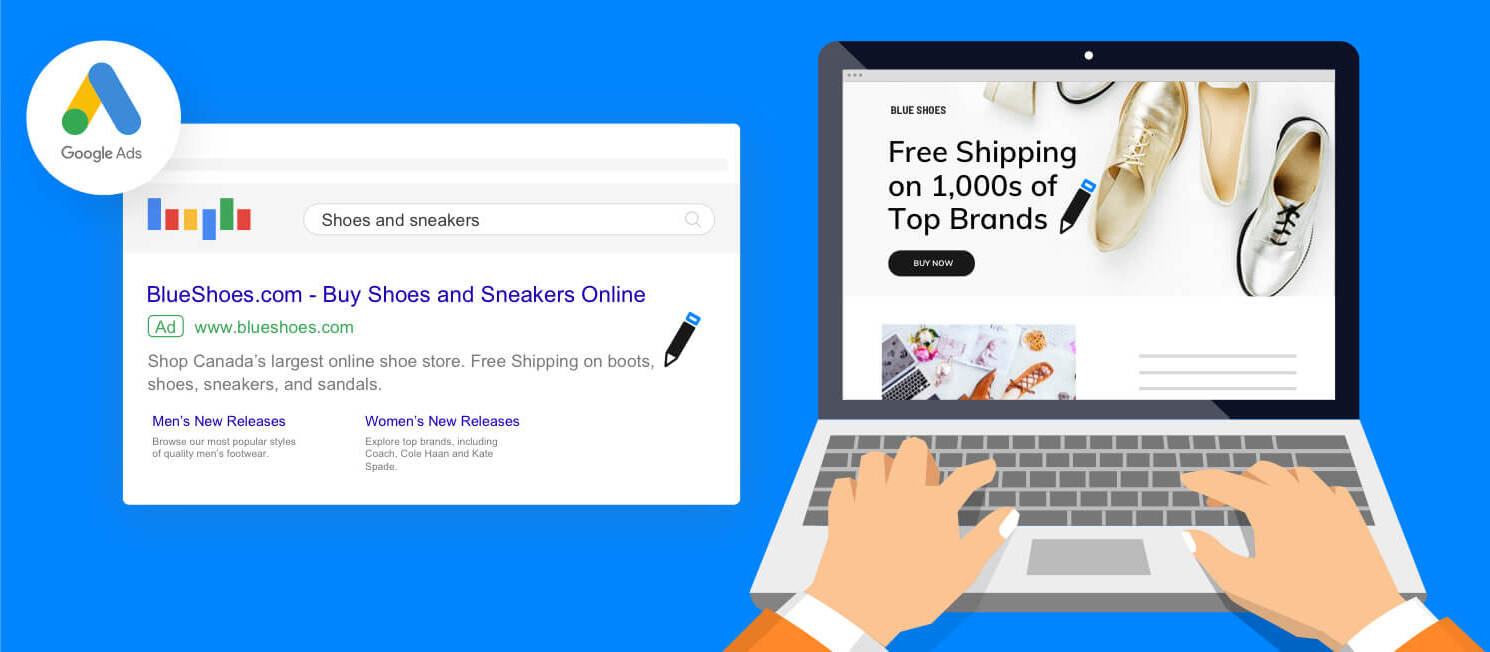Because of the way the Google ad auction works, engaging ads are a critical component. If you can produce ads that are more engaging than your competitors, and meet the other criteria for Quality Score, you will pay less per click than them for the same ad position.
Targeting, as explained in the previous lesson, is one part of it. The second part of it comes with writing and testing ads that win. A user that is ready to take action and make a purchase knows what product or service they want. When they search online, they aren’t looking for the item they want to purchase instead they are looking for an ad that will deliver them to a website that can deliver it to them.
While searching, the user has an internal dialogue in their mind about this product and its criteria. Some of these criteria are expressed through the search itself. When a user searches for ‘Lenovo Yoga’ it is clear that it is what they are looking to purchase. The first rule to follow when you write ads is to reflect the term the user is searching for in the headline of your ad. An ad’s headline is broken up into two boxes of text, separated by a dash. Each can contain 30 characters.
During the inner dialogue, a user has while they search, they are also thinking of other concrete criteria or features of the product they are looking for. If a user is searching for ‘Lenovo Yoga’ they may want it fast but aren’t expressing it through the search. The text “Two Day Shipping” can help express this to the user, thus making it more clickable. The text “Free Consultation” is an example of that can help an ad for a professional service. This can be put either in the ads headline or the description.
Another thing going through a user’s mind when they are searching is the benefit that the product will give to them. If someone is searching to buy a Lenovo Yoga laptop, they want something portable that they can use for work. Seeing copy in ads that read, “Portability & Productivity for the Professional on the Go” can fit into the conversation that they are having in their head which will entice them to click.
This copy should go in the description of the ad which can be 80 characters in length. Ads should also have a clear call to action that directs the user to move into your sales funnel. “Buy Now”, “start today”, “call for a quote” are a few examples of catchy call to actions. The call to action should come at the end of the description.
Another component you can add to your ad is one that gives credibility or trust. For eg. “30-day money-back guarantee”.
To summarize, winning search ads have components that:
- Directly match what the user is searching for, normally in the headline.
- Reflect criteria or features of the product, seller or service the user may want that he may not be searching for, such as ‘free shipping’ or ‘free consultation’.
- Reflect the benefit of the product to show that you are identifying with the user’s needs.
- If there’s room, express something to show credibility like, “over 100,000 satisfied customers”
- Have a clear call to action.
All of these components need to fit within Google’s ad template that has the following components.
A headline is usually broken into two parts; With a maximum length of 30 characters each. That leaves us with 80 characters for the description.
Finally, you are given the option to add a description of the page that the user is taken to with a sort of mock URL which is called the path. It is essentially two fields of text, 15 characters each, that comes after your domain name in the ad.
Now we’ll get into ad creation. To start with, make a list of ideas for each of the 5 components that I just listed. Then, go into Ads and click to create a new ad. Try and mix and match your different ideas for each of these components fit inside of the ad template.
The SEMrush Ad Builder tool can help you with this task by providing you with a template to enter your different ad copy ideas within Google’s search ad’s text constraints. This tool gives added value by showing you your competitor’s ads which can give you insight into the ad copy that’s working for other advertisers. We have found that researching competitor ads is very useful, but shy away from doing it until you’ve come up with your own ideas.
Now you’ll need to choose the ads you’ll use for your first tests. These tests will compare individual ads against each other. They will also test different variations of these individual components against each other. For example, if you have 3 different ads that are identical except for their call to action, you can effectively learn which call to action works the best for your product.
The primary measure of success for these tests is CTR or click-through rate. This is due to the fact that our goal is to write the most engaging ad for the terms that you’re bidding. Remember, high CTR does more than bring you clicks. High CTR also shows Google that you make the most of each ad impression. The number of ads you’ll want to test at a time depends on the number of impressions the ads get in their ad group.
If impressions are low and each ad only gets a few clicks per day, you’ll need to test fewer ad variations. Great ad copy that delivers results is a critical element of pay per click advertising. Your job is to come up with good ad copy ideas. It’s up to you the user to tell you which ad wins.
Once you master A/B testing you are one big step closer to PPC greatness.







